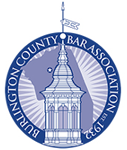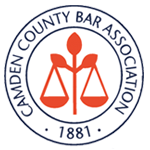Each year, thousands of people are injured on the job. Their injuries are often easily diagnosed: a back strain, broken bone, or carpal tunnel syndrome, for example.
But sometimes, a worker’s on-the-job injury is not readily apparent or does not show up until months or years later. This is often the case with medical conditions that fall under a broad category called occupational illnesses.
What is an Occupational Illness?
The Occupational Safety and Health Administration (OSHA) defines occupational illness as: any abnormal condition or disorder resulting from a non-instantaneous event or exposure in the work environment.
OSHA considers an injury or illness to be work related if an event or exposure in the workplace caused or contributed to the condition or significantly aggravated an existing condition.
Lung and other respiratory problems, diseases, and disorders are among the top occupational illnesses reported annually by employees.
What is an Occupational Lung Disease?
Occupational lung diseases or disorders affect the respiratory and pulmonary systems in the human body.
People who are routinely exposed to hazardous biological agents, chemicals, dust, gases, vapors, or fumes at work are most susceptible to occupational lung diseases. For example, miners are routinely exposed to toxic gases and harmful dust in the course of their jobs.
Unfortunately, lung diseases caused by the work environment often do not cause symptoms until after prolonged exposure. By the time a disease is diagnosed, an individual may be in the late or end stages of the illness.
Anyone exposed to a toxic substance in their workplace should contact a lawyer experienced in workers’ compensation.
What are Examples of Occupational Lung Disease?
Any disorder that affects the body’s respiratory and pulmonary systems can potentially be occupational lung disease. Examples include the following:
- Lung cancer: Although lifestyle factors, such as smoking, can cause lung cancer, it can also be caused by prolonged exposure to certain hazardous substances in the workplace.
- Silicosis: Lung fibrosis caused by inhaling dust containing silica. Fibrosis is the thickening and scarring of connective tissue. Silicas are small particles found in many types of rock and soil.
- Asbestosis: Long-term inflammation and scarring of the lungs due to prolonged inhalation of asbestos fibers in building and construction materials.
- Mesothelioma: Fatal cancer almost exclusively caused by asbestos exposure, including asbestos-related lung cancer, ovarian cancer, and laryngeal cancer.
- Chronic obstructive pulmonary disease (COPD): This progressive disease includes chronic conditions such as emphysema and bronchitis that cause restricted airflow and breathing problems.
- Reactive airways dysfunction syndrome (RADS): A form of workplace asthma caused by high-level exposure to a corrosive gas, vapor, or fumes.
- Pneumoconiosis: Permanent lung scarring caused by inhaling mineral dust.
- Black lung diseases, also known as coal workers’ pneumoconiosis (CWP): Disease causing lesions in the lungs that obstruct airflow. Often found in coal workers and miners.
- Byssinosis, also known as brown lung: Permanent lung damage and breathing problems caused by inhaling cotton fibers.
- Berylliosis: A fatal lung disease most often caused by metal poisoning.
- Bronchiolitis obliterans: A progressive respiratory illness caused by breathing in ingredients used to manufacture popcorn and flavorings.
- Other diseases: Other lung and respiratory diseases that occupational hazards can cause include pneumonitis, pharyngitis, rhinitis, acute congestion, farmer’s lung, hypersensitivity pneumonitis, and toxic inhalation injury.
What Types of Workers are in Danger of Occupational Lung Problems?
Workers who have prolonged exposure to certain toxic substances, including gases, liquids, dust, fibers, vapors, and fumes, are in danger of contracting an occupational lung illness. These include:
- Miners and coal workers
- Welders
- Farmers
- Construction workers
- Employees who work with nylon fibers such as those found in carpets, blankets, and upholstery
- Employees who work with cotton, flax, and hemp fibers
- Railroad workers, mechanics, loading dock employees, and others who are routinely exposed to diesel fumes
- Those who work in the manufacture of satellites and airplanes and others who are exposed to metal particles
- People who work in the production of popcorn and flavorings and others who are exposed to certain toxic substances
- Office workers exposed to mold and asbestos in the workplace
This is not an exhaustive list of workers who could develop occupational lung disease. Anyone diagnosed with a lung or respiratory disorder that could be caused by their work should contact a workers’ compensation lawyer.
What are Common Symptoms of Occupational Lung Disease?
Although every person is different, common symptoms of occupational lung disease include but are not limited to the following:
- Abnormal breathing
- Difficulty breathing
- Shortness of breath
- Chest tightness
- Chest pain
- Coughing
Not every person will present with all of these symptoms, and other symptoms may be present. A medical provider can diagnose a disorder or disease through one or more of the following:
- X-ray
- CT scan
- Examination of airway and bronchial functions
- Biopsy of lung tissue, fluids, and cells
- Pulmonary function tests
- Bronchoscopy
- Tests to measure oxygen and carbon dioxide in the blood
If the medical provider diagnoses a lung disease, treatment will depend on the type and severity but can include surgery, chemotherapy, radiation, medications, and oxygen supplementation.
Does Workers’ Compensation Cover Occupational Lung Disease?
Workers’ compensation in New Jersey covers occupational lung disease. However, a medical provider, most often chosen by the employer or its insurer, will need to determine whether they believe the workplace caused the disease.
The medical provider will review the employee’s overall health and past medical records and the amount, length, and frequency of the exposure to the toxic substance.
An employee may not have to prove that the exposure caused the illness; a case can also be made that exposure aggravated or contributed to a medical condition.
What Does Workers’ Compensation in New Jersey Cover?
Workers’ compensation in New Jersey provides the following benefits depending on the medical provider’s report and other factors. Note that this is a general overview of benefits:
- Temporary disability benefits: Employees who cannot work for more than seven days may be entitled to receive temporary benefits equal to 70 percent of their average weekly wages before the injury for up to 400 weeks. Maximum and minimum benefit amounts apply.
- Permanent total disability benefits: When a doctor deems a worker has reached maximum medical improvement, they will also determine any lasting disability. If there is permanent disability, the worker will continue to receive the amount provided under temporary disability, up to 450 weeks. At that point, there will be a comprehensive evaluation to determine continued total disability.
- Loss of both eyes, hands, arms, feet, or legs, or a combination of any two are automatically considered to be permanent and total disability.
- Permanent partial disability benefits: If the injury or illness has left the employee with a lasting medical condition or lost function, but they can still work in some capacity, they may be eligible for permanent partial disability benefits. Benefit amounts vary depending on the severity and type of medical condition.
- Medical benefits: Workers’ compensation pays for authorized medical treatment related to the illness or injury.
- Death benefits: A surviving spouse, minor children, and certain other dependents of an employee who dies of a work-related illness or injury are entitled to death benefits.
- Funeral expenses: The family of an employee who dies of a work-related illness or injury can receive up to $5000 in funeral and burial costs.
What is Not Covered Under Workers’ Compensation?
Workers’ compensation in New Jersey covers just a portion of an employee’s lost wages. It also does not compensate an employee or their loved ones for the pain and suffering caused by a work-related illness or injury.
Sometimes there are disputes between the doctor, employer or insurer, and the injured employee or their family, resulting in lost or reduced benefits and earning ability.
What Should I Do if I Suspect Occupational Lung Disease?
Those who suspect occupational lung disease should contact a workers’ compensation lawyer. They can guide employees who suspect occupational lung disease in reporting the illness, the workers’ compensation claim process, and how to document medical appointments and doctor reports.
An employee who believes they have occupational lung disease caused by a former employer should also contact a workers’ compensation lawyer.
Cherry Hill Workers’ Compensation Lawyers at Pietras Saracino Smith & Meeks, LLP, Protect the Rights of Injured Workers
If you believe your workplace caused a lung or respiratory disorder, contact the Cherry Hill workers’ compensation lawyers at Pietras Saracino Smith & Meeks, LLP. Our team has considerable experience recovering all the benefits for which an injured worker is entitled, even outside of workers’ compensation or when there is a dispute with workers’ compensation findings. Call us today at 856-761-3773 or contact us online to schedule a free consultation. Located in Cherry Hill, New Jersey, we serve clients in Camden, Cinnaminson, Delran, Maple Shade, Pennsauken, and throughout South Jersey.













